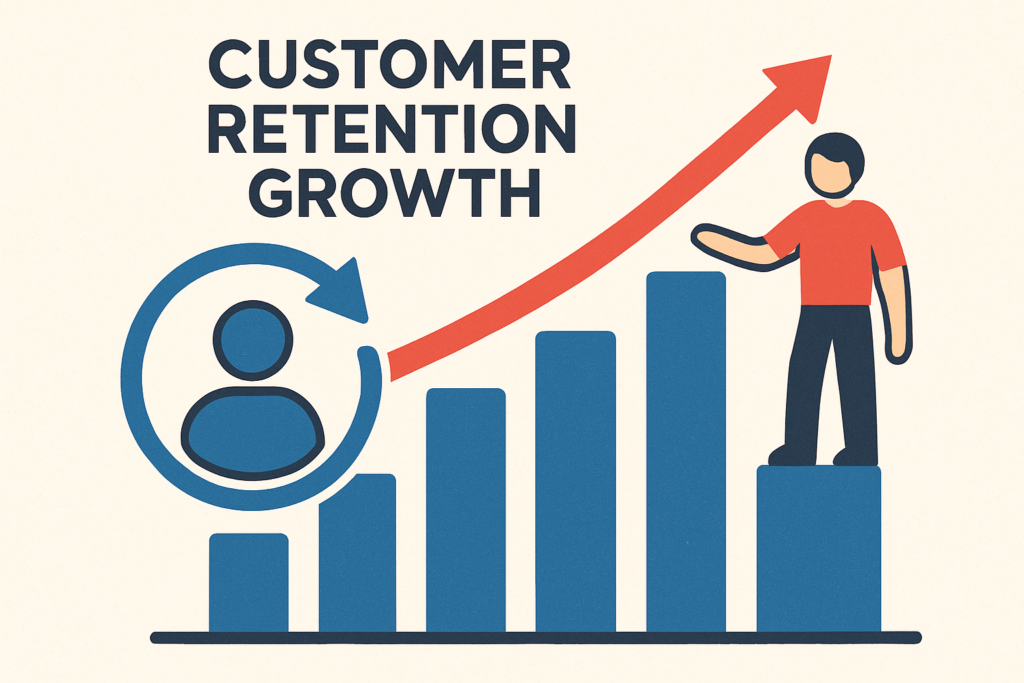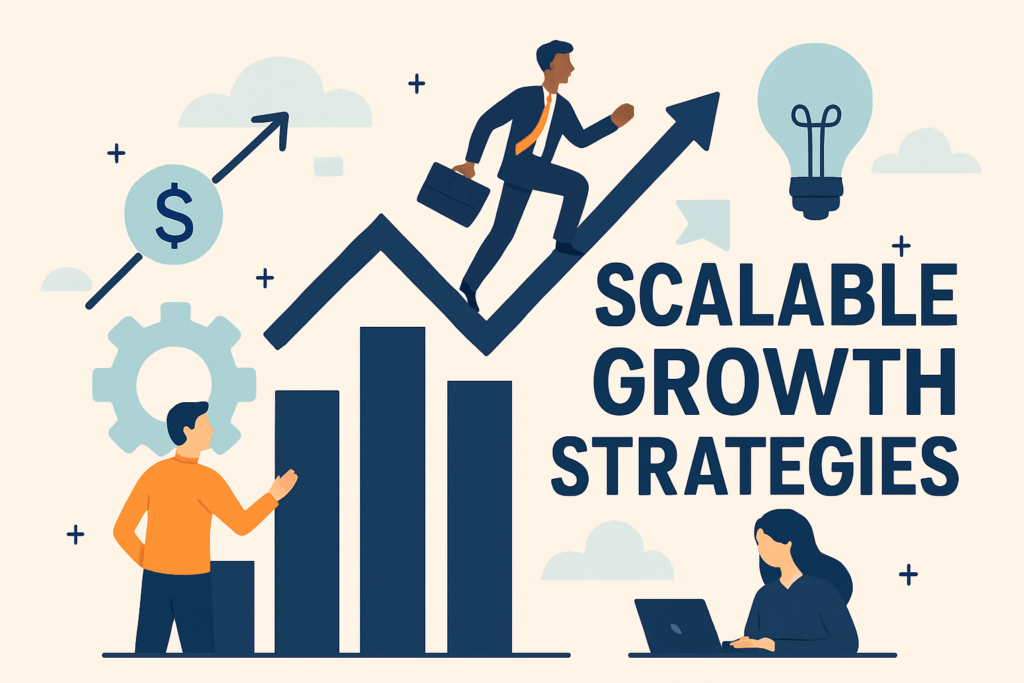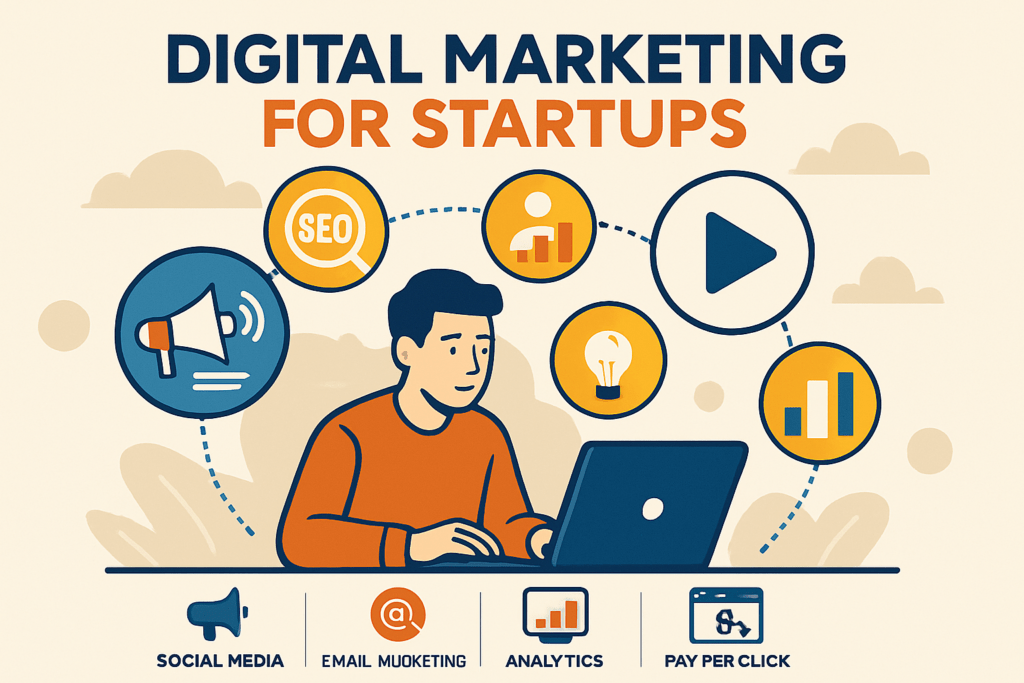Customer Retention Growth: Why It Matters
- Brief intro: Keeping customers costs less than finding new ones.
- Main keyword: customer retention growth.
- Retention fuels revenue, stability, and word-of-mouth.
Customer Retention Growth: Why It Matters
Here’s the uncomplicated truth: keeping your current customers is a lot less expensive (and way more efficient) than chasing after new ones. This is where customer retention growth steps in—your secret weapon for long-term business health.
Retained customers are the steady heartbeat behind your revenue. They make repeat purchases, try new products without heavy prodding, and aren’t shy about telling friends why they stick with you. Every time you focus on retention, you edge closer to predictable, sustainable income—a foundation most companies pay dearly to create from scratch.
Word-of-mouth, organic growth, and stable margins are all easier to achieve when your business runs on customer retention growth. Less marketing spend, more loyal fans, steadier ground. Simple, smart, essential.
Core Principles of Customer Loyalty
Customer loyalty is earned, not given. At its core, loyalty comes down to trust—customers want to know they’ll get what they paid for, and that you’ll have their back if things go sideways. Value matters too. If people get more than they expected, or the experience is smoother than the competition’s—that’s fuel for long-term loyalty. Every positive interaction counts; whether it’s a quick fix on a support call or a product that just works, customers remember when you deliver.
Don’t treat all customers the same. Some folks buy from you regularly, refer their friends, and even sing your praises online. Identify these top customers and go the extra mile for them—tailored offers, early access, or a shoutout on social media. Make it obvious that you value their business, and you’re building a two-way street of trust and appreciation. That’s the real secret: customer loyalty isn’t a “set it and forget it” deal. It’s recognizing who keeps you in business—and giving them good reasons to keep coming back.
What Happens After Winning Millions?
Winning a life-changing lottery jackpot is every player’s dream, but few are prepared for what comes next. An instant influx of wealth can bring excitement and a wave of challenges. Many winners find themselves overwhelmed by financial decisions, from managing taxes to making smart investments. Some handle it well, while others struggle with reckless spending that drains their fortune.
The Financial Reality of Winning
Suddenly winning a large amount of money doesn't come easy:
- Taxes and Legal Issues – Often, a large chunk of winnings goes to taxes, and without proper planning, legal troubles can arise.
- Investing vs. Spending – Some winners hire financial advisors to ensure long-term security, while others spend impulsively.
- Budgeting for the Future – Even the biggest jackpots can disappear quickly without proper money management.
A Lifestyle Overhaul
Sudden wealth changes life in multiple ways:
- Luxury Purchases – Mansions, sports cars, and extravagant vacations become instantly affordable.
- Social Pressure – Long-lost friends and distant relatives often reappear, expecting a share of the winnings.
- Privacy Challenges – Some winners struggle with unwanted media attention and scrutiny.
While some winners openly embrace their new wealth, others choose to live discreetly to avoid pressure and expectations.
Giving Back and Creating a Legacy
For some, wealth is an opportunity to make a difference. Many winners choose to:
- Donate to charities and community projects
- Fund scholarships or support educational initiatives
- Invest in businesses that create jobs and opportunities
Some lottery winners transition from players to philanthropists, proving that wealth can be used to leave a lasting impact. However, not all stories end positively—many find themselves bankrupt within years if they fail to manage their winnings properly.
Customer Engagement That Sticks
Here’s the thing: real customer engagement isn’t just about sending another promo email or dropping a like on social media. It’s about making your customers feel seen and heard, every time, without bells and whistles.
Start by actually listening. Short, clear surveys—delivered at the right time—give you feedback gold. Ask what matters, keep it simple, and, crucially, act on the results. When you roll out a change based on customer input, let them know. It signals you care and it keeps them invested.
Staying top of mind takes consistency. Use social media or email to provide genuine value—think updates, tips, quick thank-yous, not just sales noise. Engagement here is a two-way street: reply to comments, answer questions, and don’t leave folks hanging. Fast, friendly responses build trust faster than any ad campaign could.
Bottom line: customer engagement sticks when it’s personal, immediate, and honest. Focus less on the megaphone, more on the dialog, and you’ll see stronger connections (and loyalty) as a result.
Measure and Adapt
The truth? If you aren’t measuring, you’re just guessing. Keep tabs on your churn rate, Net Promoter Score (NPS), and how often customers come back—these are your North Stars for customer retention growth. Numbers don’t lie. If your NPS is sinking or return visits are trending down, something’s off.
But don’t stop at numbers. Go straight to the source: your customers. Ask what’s working and what’s not. Keep feedback simple—no one wants to fill out a 30-question survey. A quick “How did we do?” after a purchase can reveal gold.
When feedback rolls in, don’t bury it. Make your response public. Update your policies or products, then let customers know you listened. The fastest route to loyalty is showing you care enough to change. Measurement and adaptation aren’t fancy. They’re just discipline and humility in action.
Industry Examples: Lessons from the Best
Look at how Starbucks has made loyalty look effortless. Their rewards program nails it: free drinks, custom birthday treats, and order-ahead convenience—all baked into their app. It keeps regulars coming back and nudges occasional visitors to show up more often, all while collecting data that helps Starbucks keep its edge. This isn’t just about coffee perks. When you personalize rewards and make the customer experience faster, smoother, and genuinely rewarding, you lift retention without feeling pushy.
Another champ? Amazon Prime. While not every business can afford to offer two-day shipping or stream movies, the mindset matters. Prime members get clear perks (fast delivery, exclusive deals), but what really hooks them is how Amazon solves pain points before customers even notice. Prime’s little touches—easy returns, quick customer support, and special shopping days—turn average buyers into near-lifelong fans.
What’s the lesson? It’s not about copying the perks, but about understanding what makes your best customers tick. Whether you’re running a coffee shop or an online shop, use personalization, rapid problem-solving, and VIP treatment (even in small ways) to boost your own customer retention growth. Those little efforts stack up quickly, setting your brand apart from the forgettable crowd.
Ready to Level Up?
Here’s the bottom line: customer retention growth doesn’t need to be complicated. A few focused changes—listening better, smoothing out your processes, showing that you value loyalty—can lead to bigger profits and less stress. Remember, chasing new customers is fine, but real growth comes from stronger relationships with the ones you already have. Every tweak counts, and you don’t have to overhaul your whole operation to see results. Want a deep dive into the nitty-gritty? Take a look at this Harvard Business resource for serious strategy advice. The sooner you start, the sooner those small wins add up.




